Aspire Double Comfort Memory Rolled Mattress
From £49.33 per month with no deposit.
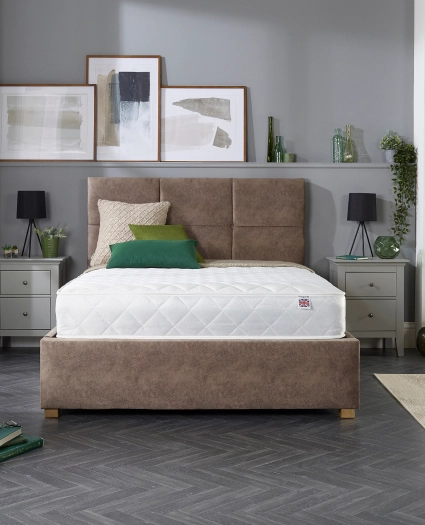
Customise your perfect bed with our range of leading fabrics, styles and designs
Build your bed
Customise your perfect bed with our range of leading fabrics, styles and designs
Build your bed
Customise your perfect bed with our range of leading fabrics, styles and designs
Build your bed
Customise your perfect bed with our range of leading fabrics, styles and designs
Build your bedIf you’re waking up every morning with your eyes running, nose stuffed full and itchy eyes, your mattress might be to blame.
While your bed is supposed to be a clean and comfortable place of rest, your pillows, bedding and mattress could be secretly harbouring dust mites, pet dander, mould, and other allergens that are likely setting off your sinuses.
The unfortunate thing is you can’t see most of these irritants, but they will be hidden deep in your mattress, clinging to your pillows or even hanging in the air.
The good news is, after reading this guide, you will understand some more about what could be causing your allergies to go haywire. We’ll break down the common allergens in your bed, how they impact your health, and, most importantly, how to get rid of them for good.
Dust mites are microscopic creatures that thrive in warm, humid environments as a result making your mattress, pillows, and bedding the perfect breeding ground. They feed on dead skin cells and multiply fast, leaving behind waste particles that can trigger allergic reactions such as sneezing, congestion, and itchy eyes.
How To Reduce Potential Dust Mites
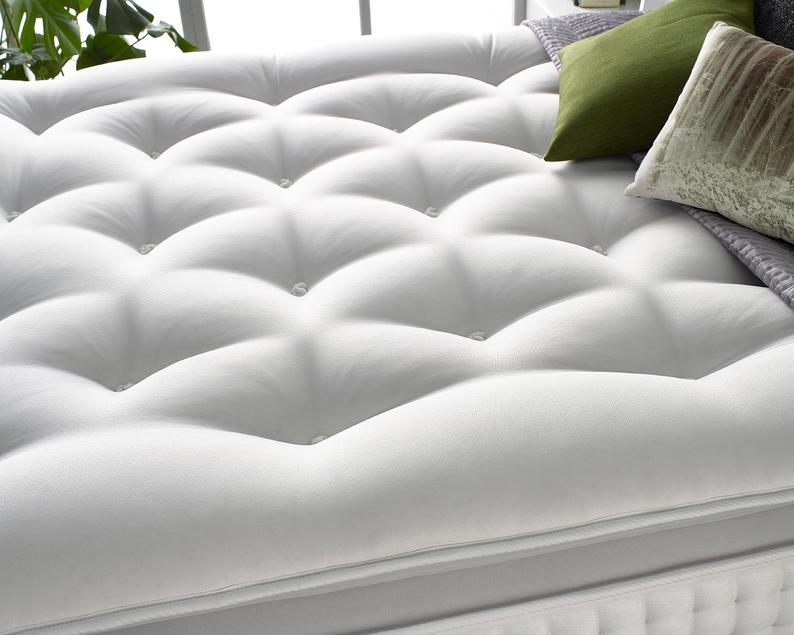

Even if your furry friend doesn’t sleep in your bed, pet dander, which is basically tiny skin flakes shed by cats and dogs, can easily cling to your bedding and pillows. Dander contains proteins that can irritate your immune system, potentially trigger allergic reactions, especially for those with asthma.
How to Reduce Pet Dander
Mould and mildew thrive in damp, poorly ventilated environments, thus meaning your mattress, pillows, or even bed frame can be at risk. Exposure to mold spores can lead to nasal congestion, coughing, skin irritation, and potentially even more serious respiratory problems.
How to Prevent Mould and Mildew in Your Bed:
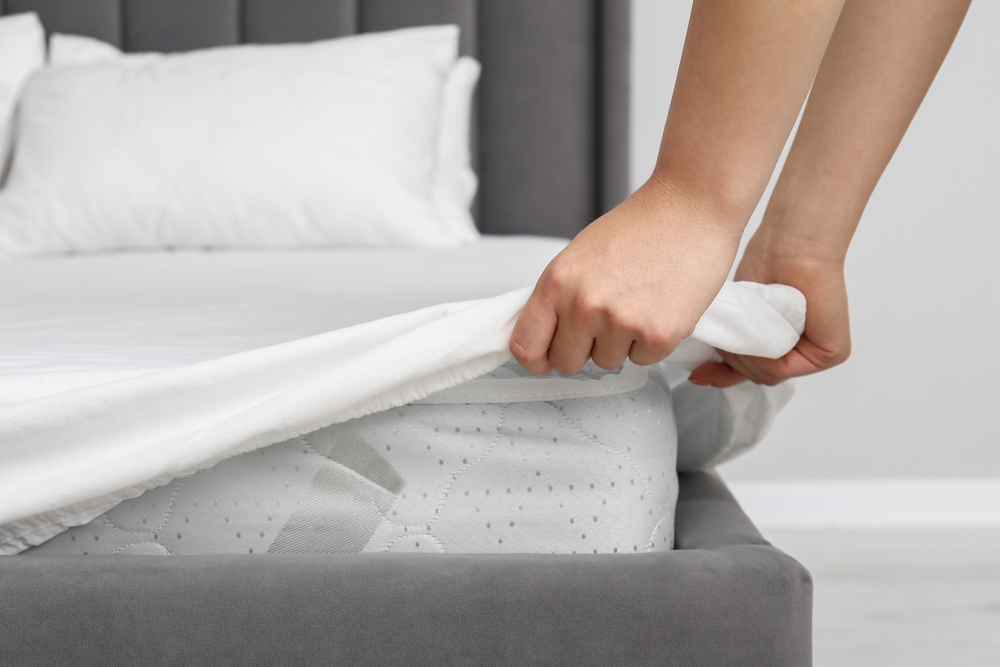
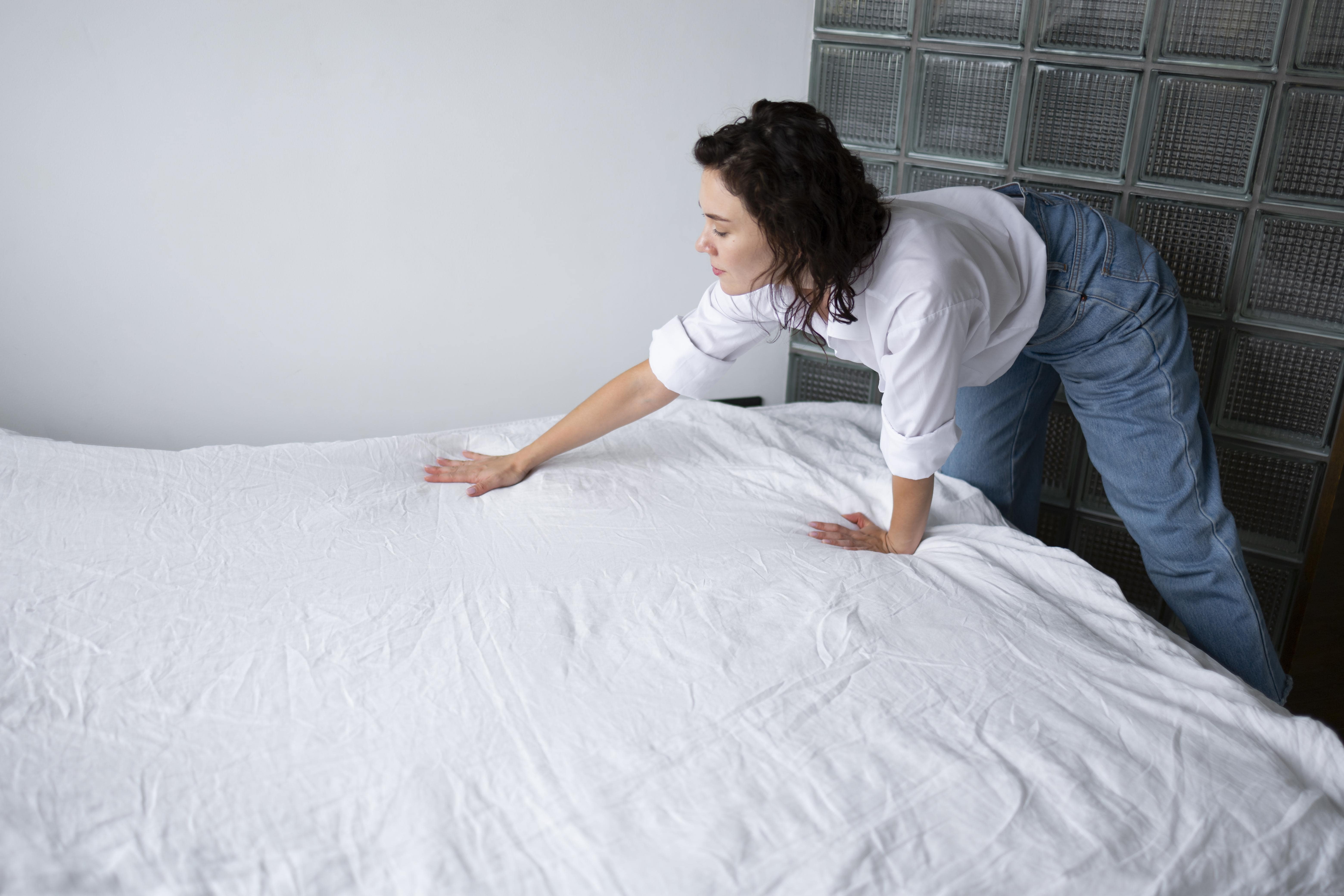
Pollen from outside can easily hitch a ride on your clothes, hair, and pets, in the spring and summer months, and if you wear these same clothes to lay on your bed, or do not wash your hair before lying down, you run the risk of transferring this pollen onto your pillows and bedding.
If you’re someone who is sensitive to pollen, you might find your allergy symptoms flaring up more at night.
How to Keep Pollen Out of Your Bed:
When thinking about allergens in the bedroom, most people focus on mattresses and bedding—but your bed frame could be making things worse too. Upholstered bed frames and headboards, in particular, can trap dust, pet hair, and even mould spores over time, especially if they’re not cleaned regularly.
If you often wake up feeling congested or sneezy, your bed frame might be harbouring more than just stylish fabric.
How to Keep Your Bed Frame Allergy-Free:
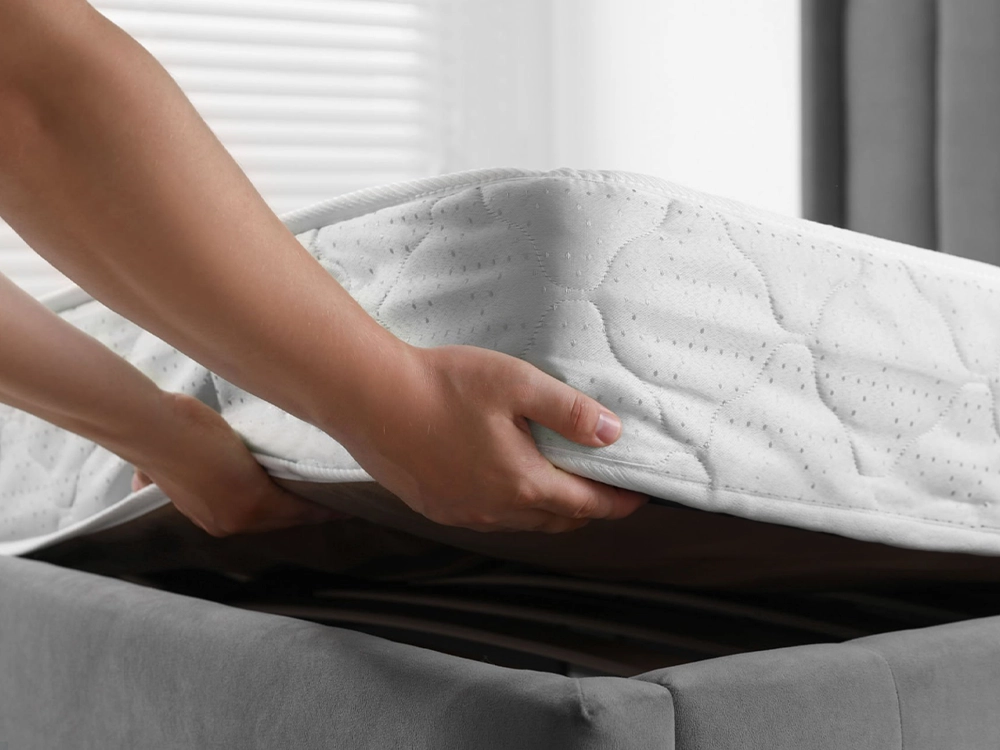
Your mattress is meant to help you sleep better, but if you’re waking up feeling congested, sneezy, or just downright uncomfortable, it might actually be working against you instead of for you. Over time, mattresses collect dust, bacteria, and all sorts of invisible irritants that can make allergies worse. If yours has been around for years, it’s likely holding onto more than just dreams and memories.
If your mattress has seen better days, then it might be more susceptible to developing some of the aforementioned causes of allergies, especially if your mattress has not been kept clean over the years. If you can’t remember when you bought yours, or if you find yourself waking up stuffy and irritated, it might be time for an upgrade.
Here at Aspire, we have a wide range of comfortable and supportive mattresses that promise to provide you with some of the very best night’s sleep. No longer will you need to worry about a mattress not giving you the sweet sleep you deserve.
If you are indeed interested in finding a new mattress for your bed and you are someone who struggles with allergies, understanding which mattress is best is a wise place to start.
Memory foam for example, is often praised for its comfort and support, but it has a mixed reputation when it comes to allergies. On the plus side, it’s made from dense material, which means dust mites have a harder time burrowing into it compared to traditional spring mattresses. However, memory foam also retains heat and moisture, which can encourage bacteria and mold growth, and these are two things you definitely don’t want in your bed. If you’re set on memory foam, look for one with cooling gel layers and make sure to use a breathable mattress protector to prevent moisture buildup.
Alternatively, hybrid mattresses combine layers of foam with pocket springs, offering a balance of support and breathability. The added airflow from the springs helps keep moisture at bay, making it a better option for allergy sufferers than pure memory foam. However, since hybrid mattresses still contain foam layers, dust mites can still find their way in over time. Choosing one with hypoallergenic materials and regularly vacuuming your mattress can help keep allergies under control.
If you want the best option for allergies, natural latex mattresses are hard to beat. Unlike memory foam and hybrid mattresses, natural latex is naturally resistant to dust mites, mould, and bacteria. It’s also breathable, so it doesn’t trap heat and moisture the way memory foam does. However, be sure to go for 100% natural latex, as synthetic versions may still contain chemicals that can trigger sensitivities.
If you’ve been waking up congested, itchy, or sneezing, your bed might be playing a bigger role in your allergies than you realise. From dust mites and pet dander to mould, pollen, and even hidden allergens in your bed frame, your sleeping environment can significantly impact your comfort and health. The good news? With regular cleaning, protective bedding, and the right mattress choice, you can drastically reduce allergens and start waking up feeling refreshed instead of stuffed up.
If your mattress has seen better days, upgrading to a hypoallergenic option could be the best move for both your sleep and your health. Whether it's a breathable hybrid, a naturally resistant latex mattress, or a well-protected memory foam model, the right choice can help you rest easily without allergens getting in the way.
At Aspire, we offer a range of supportive, high-quality mattresses designed to give you the fresh, restful sleep you deserve. So if your allergies are keeping you up at night, maybe it’s time for a change, because a cleaner, healthier sleep starts with the right mattress.
From £49.33 per month with no deposit.
From £83.00 per month with no deposit.
From £55.00 per month with no deposit.
